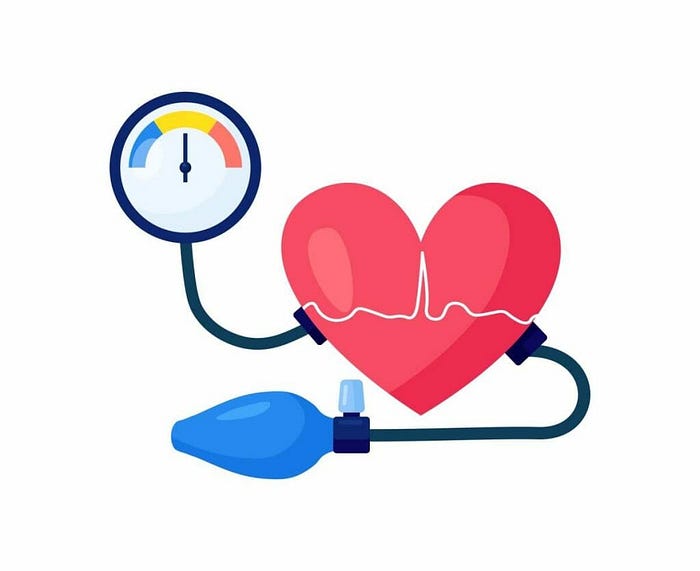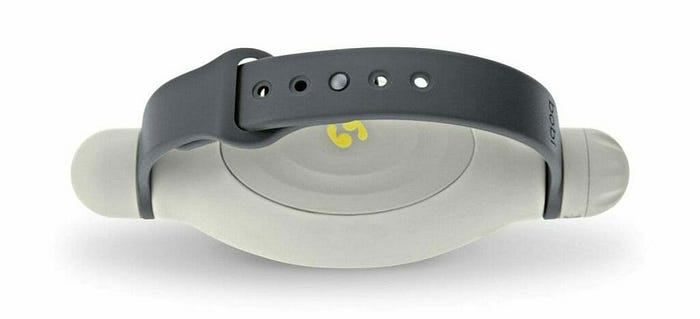
High blood pressure, also known as hypertension, is a major public health issue. In the US nearly half of adults have hypertension (48.1%, 119.9 million) or are taking medication for hypertension. In this blog, we will explore the state of play of blood pressure, including the adverse health impact of uncontrolled hypertension. We will dive into some natural interventions that can help with blood pressure control, including slow conscious breathing and isometric hand exercises. We will also explain the science behind each intervention and how they affect our body. Lastly, we will introduce bobi, an innovative device that combines both interventions for easy and effective blood pressure control.
Blood pressure state of play
High blood pressure, or hypertension, affects millions of people worldwide and increases the risk of heart disease, stroke, and other cardiovascular complications, including heart attack. Lifestyle changes, like diet and exercise, play a crucial role in managing blood pressure. Regular monitoring helps identify any changes or abnormalities. Understanding the normal blood pressure range and maintaining it is essential for optimal health. By incorporating techniques such as slow conscious breathing and isometric hand exercises, you can naturally intervene and manage your blood pressure. These interventions have been studied and proven to have a calming effect on the body and contribute to better heart health.
Key causes of blood pressure in the modern world
A sedentary lifestyle and lack of physical activity, along with a family history of hypertension, contribute to high blood pressure levels. Additionally, it has been widely reported that excessive sodium intake from processed foods remains a major factor in elevated blood pressure. Chronic stress and poor stress management can also lead to increased blood pressure. Obesity and unhealthy diet choices play a significant role in hypertension as well. Lastly, excessive alcohol consumption has been found to contribute to both high blood pressure and other cardiovascular issues. It is important to address these key causes of blood pressure, including family history, in order to maintain optimal heart health.
Natural interventions for managing blood pressure
When it comes to managing blood pressure, there are several natural interventions that can be highly effective. Slow conscious breathing, along with isometric hand exercises, has shown promising results in lowering blood pressure levels. Additionally, regular aerobic exercise and strength training can help improve blood pressure. A healthy diet with reduced sodium intake and increased potassium-rich foods can support blood pressure control. Making lifestyle changes, such as maintaining a healthy weight, limiting alcohol consumption, and strengthening the breathing muscles, can also positively impact blood pressure. These natural interventions offer an easy and accessible way to manage blood pressure effectively.
Slow conscious breathing
Slow conscious breathing involves taking deliberate, controlled breaths in a slow and gentle manner. This technique activates the body’s relaxation response, helping to reduce stress levels. Not only does slow conscious breathing have a calming effect on the mind, but it can also have a positive impact on blood pressure. Studies have shown that incorporating this practice into your daily routine can help lower both systolic and diastolic blood pressure readings. By dedicating just a few minutes each day to slow conscious breathing exercises, you can enjoy significant benefits for blood pressure control and overall heart health.
Additionally, nitric oxide is produced naturally by the human body and is widely cited as one of the most important molecules for blood vessel health. Repeated studies have confirmed nitric oxide increases blood flow and lowers blood pressure. Moreover, in certain pathological conditions, such as hypertension, there is reduced production or bioavailability of nitric oxide, which prevents the buildup of plaque in arteries.
One crucial way the body produces increased nitric oxide is through nasal breathing. Coaching people to breathe nasally has become one of many non-pharmacological interventions for high blood pressure and is supported by multiple studies.
Isometric Hand Exercises
Isometric hand exercises involve exerting sustained effort while squeezing a small object, such as a stress ball or handgrip. These exercises activate the muscles in the hand, arm, and shoulder, contributing to overall blood pressure control. Studies have shown that regular practice of isometric hand exercises can help lower blood pressure readings, making it a convenient and effective technique for blood pressure management. By incorporating these exercises into daily activities, such as while watching TV or working at a desk, you can conveniently and easily contribute to your heart health. Recent research has shown that isometric exercise is the most effective form of exercise to reduce blood pressure.
The Science Behind Slow Conscious Breathing and Blood Pressure Control
Slow conscious breathing is a powerful technique that has been proven to have a positive effect on blood pressure regulation, including meditation. When we engage in slow conscious breathing, the vagus nerve is activated, which plays an important role in lowering blood pressure. A recent research project published reveals the positive impact of conscious breathing, including meditation, on blood pressure control. According to the study, practicing conscious breathing, including meditation, for just a few minutes a day can significantly reduce blood pressure levels and improve overall cardiovascular health. These findings add to the growing number of studies that highlight the benefits of conscious breathing, including meditation, for a range of health issues. It’s clear that incorporating conscious breathing techniques, including meditation, into your daily routine can have a significant impact on your overall well-being. In addition to regulating blood pressure, deep conscious breathing, including meditation, has other benefits as well. For instance, it can promote relaxation, which can help reduce stress-related high blood pressure. Furthermore, slow conscious breathing, including meditation, can improve blood flow and oxygenation, both of which are crucial for maintaining healthy blood pressure levels.
How does Slow Conscious Breathing Affect our Body?
Slow conscious breathing stimulates the diaphragm and respiratory muscles, activating the parasympathetic nervous system. This leads to decreased heart rate and blood pressure. It also increases nitric oxide production, relaxing blood vessels. Regular practice improves cardiovascular health, reduces the risk of heart disease, promotes relaxation, and reduces inflammation.
The Science Behind Isometric Hand Exercises and Blood Pressure Control
Isometric hand exercises activate the muscles in the hand and forearm, increasing blood flow. According to a study published in the British Journal of Sports Medicine, this activation triggers a reflex response that dilates blood vessels, resulting in decreased blood pressure. By strengthening the muscles involved in blood pressure regulation, isometric hand exercises improve cardiovascular health. Numerous studies have demonstrated a significant reduction in blood pressure after performing these exercises. The long-term benefits of regular practice include effective blood pressure control. Incorporating isometric hand exercises into your routine can contribute to better overall cardiovascular health and blood pressure management. Isometric resistance exercise has been classified as one of the best non-pharmacological interventions for preventing and treating hypertension in the 2017 American College of Cardiology and American Heart Association guidelines.
How do Isometric Hand Exercises Affect our Body?
Isometric hand exercises have a positive impact on our bodies. They stimulate muscles and tendons, improving blood flow. These exercises increase nitric oxide production, helping to relax blood vessels and lower blood pressure. Regular practice improves grip strength and cardiovascular endurance, making it a convenient way to manage blood pressure.

Blood Pressure Control with bobi
bobi, a specially designed device, assists in blood pressure control by combining the powerful effects of conscious breathing and isometric hand exercises. It provides guided instructions for slow conscious breathing and represents a unique tool for building the habit of better breathing. bobi offers physical resistance, ideal for isometric hand exercises, facilitating optimal blood pressure regulation. Convenient and effective, bobi is a unique solution for individuals seeking to maintain healthy blood pressure levels. Enhance your cardiovascular health with bobi’s innovative approach.
Conclusion
In conclusion, conscious breathing and isometric hand exercises are natural and effective ways to manage blood pressure. By practising slow conscious breathing, you can activate the body’s relaxation response and lower blood pressure. Isometric hand exercises, also incorporated with bobi’s functionality, help improve blood flow and circulation, which can have a positive impact on blood pressure levels. Both of these interventions are backed by scientific research and can be easily incorporated into your daily routine for maximum benefits.
bobi offers a convenient and effective way to practice conscious breathing and to build a healthy lifestyle habit. Regular use of bobi can lead to improved overall health and well-being. However, it’s important to consult with a healthcare professional before incorporating any new health routines or using bobi as a tool for managing blood pressure. With regular use and proper guidance, bobi can be a valuable addition to your overall wellness routine.

Originally published at Meetbobi.com.
























